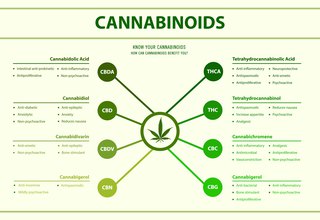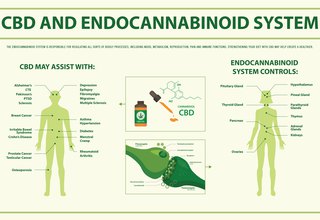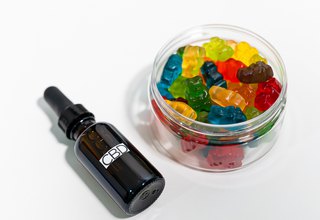The Endocannabinoid System: How to Keep Your Body Balanced With Cannabis
Nov 16, 2022

We all know that our body is composed of different “systems” that keep it healthy and operational. They include the skeletal system, the muscular system, the nervous system, the digestive system, and so on.
But have you heard of the endocannabinoid system? This essential and mysterious body system is the reason that cannabis is such an effective medicine– our bodies are literally built for it!
When you take CBD gummies, smoke flower, or consume any other cannabis products, they go right to work in your endocannabinoid system, which actually helps control all of your other body systems. Read on to learn more!
What is the Endocannabinoid System?
Okay, time for Endocannabinoid System 101. This widespread system of cannabinoids, cannabinoid receptors, and enzymes was discovered by Dr. Allyn Howlett and her research team at St. Louis University in 1988.
Dr. Howlett wanted to find out why THC affects the body the way it does. Using synthetic THC and radioactive dye, she and her team were able to follow the pathway of THC in the brain. They noticed that it attached itself to a specific receptor on certain cell membranes.
A receptor works like a lock on a particular cell body. All receptors in the body require “keys” to unlock them. Other “lock and key” receptors in our body include opioid receptors and dopamine receptors.
The discovery of this cannabinoid receptor encouraged scientists to look for the cannabinoid “keys” that are naturally produced by our body, and they succeeded! Since 1992, scientists have discovered 5 “inner cannabis” compounds, called endocannabinoids (endo meaning ‘inside’).
The two main endocannabinoids are Anandamide (also known as N-arachidonoylethanolamine or AEA) and 2-arachidonoylglycerol (2-AG).
The endocannabinoid system consists of these endocannabinoids, hundreds of cannabinoid receptors, and the enzymes that create and dissolve our endocannabinoids.

What Does the Endocannabinoid System Do?
The endocannabinoid system is hugely important– it works as a taskmaster for all of our other body systems, telling them when to turn on and when to turn off. The job of the ECS is to maintain balance in our body.
According to Dr. Bonni Goldstein in her book Cannabis Revealed, the ECS releases endocannabinoids when triggered by imbalances such as injury, illness, or inflammation.
These endocannabinoids unlock the body systems that control:
- Gastrointestinal activity
- Cardiovascular activity
- Pain perception
- Modulation of neurotransmitter release
- Maintenance of bone mass
- Protection of neurons
- Hormonal regulation
- Metabolism control
- Immune function
- Inflammatory reactions
- Inhibition of tumor cells
CB1 and CB2 Receptors
The ECS plays a role in so many body functions because of its widespread network of receptors. Where are cannabinoid receptors located? All over the body!
There are two known types of cannabinoid receptors that have been identified and mapped in the body: CB1 and CB2 receptors.
Cannabinoid Receptors in the Brain
The cannabinoid receptors in the brain are all CB1 receptors. According to Dr. Goldstein, CB1 receptors are found in the centers of the brain responsible for sensory perception, learning and memory, emotions and mood regulation, motor control and coordination, appetite, nausea/vomiting, and pleasure and reward.
It is interesting to know that there are no cannabinoid receptors in the areas of the brain that control respiration and heart rate. This is why it is impossible for cannabis to cause a fatal overdose.
Cannabinoid Receptors in the Body
CB1 receptors can also be found in other places in the human body, including the lungs, the vascular system, muscles, gastrointestinal tract, and reproductive organs. The cannabinoid receptors in the gut are CB1 receptors.
CB2 receptors are located in the spleen, bones, and skin.
Your immune system, liver, bone marrow, and pancreas contain both CB1 and CB2 receptors.
Endocannabinoids (cannabinoids produced by the body) are designed to bind to CB1 and CB2 receptors and unlock them so that they can function properly.
Plant-based cannabinoids, such as the ones from cannabis, can also bind to these receptors. Cannabinoids that come from cannabis (and some other plants, in small quantities) are called phytocannabinoids.
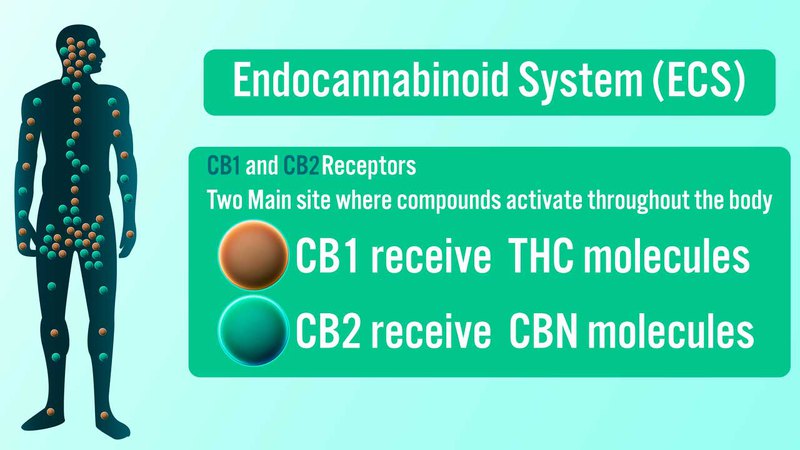
How Does CBD Affect the Endocannabinoid System?
While THC, CBG, CBN and some other phytocannabinoids bind directly to the CB1 and/or CB2 receptors, CBD does not. But it does interact with the ECS in other ways.
CBD has a therapeutic effect on the endocannabinoid system because it blocks the enzyme that breaks down Anandamide and THC, thus keeping our system more flush with cannabinoids.
(This is why CBD works even better when you add some THC into the mix!)
Do All Animals Have An Endocannabinoid System?
Actually, yes! Studies have shown that both vertebrates and invertebrates have an ECS, despite What do these varied creatures have in common? They all have an endocannabinoid system, just like us! Insects are the only animals that do not have an ECS.
Endocannabinoid System in Dogs
Like all other mammals, dogs do have an endocannabinoid system. Further research is needed, but it is clear that a dog’s ECS functions in a similar way to that of a human.
One notable difference is that dogs have more CB1 receptors in their brain than humans, which means they may be more sensitive to cannabinoid treatment. Thus, while you may decide to buy CBD treats for your pet, you should never give your dog THC.
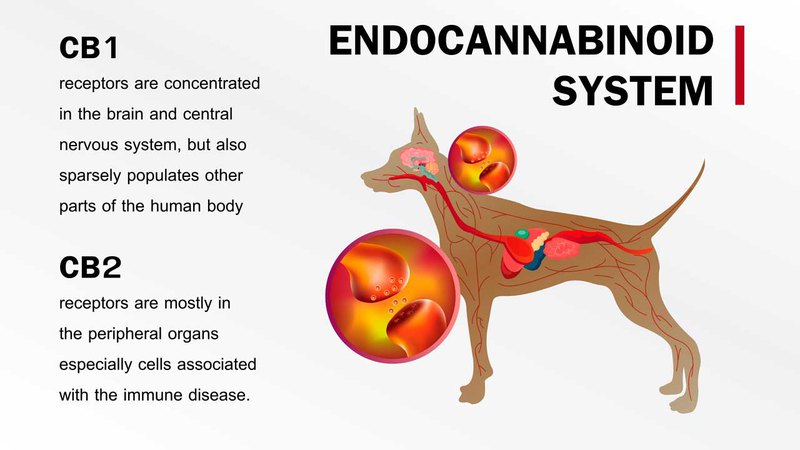
Do Cats Have an Endocannabinoid System?
Yes! Fewer specifics are known about the cat ECS, but they do have one, as all animals (excluding insects) do. Scientists continue to learn more about the ECS in different species.
How to Supplement the ECS
How to repair cannabinoid receptors and improve the function of your ECS? There are no pharmaceuticals on the market that work with the endocannabinoid system. The secret is phytocannabinoids from cannabis!
Taking a daily CBD supplement is a natural method that may help “tone” your endocannabinoid system. It’s like a vitamin for your ECS!
Ready to feel more balanced in your body? PharmaCBD offers the purest, most effective, full-spectrum CBD on the market. Our CBD edibles, capsules, pre-rolls, and more may help your endocannabinoid system maintain homeostasis and improve your overall well-being. Shop Pharma CBD now!

